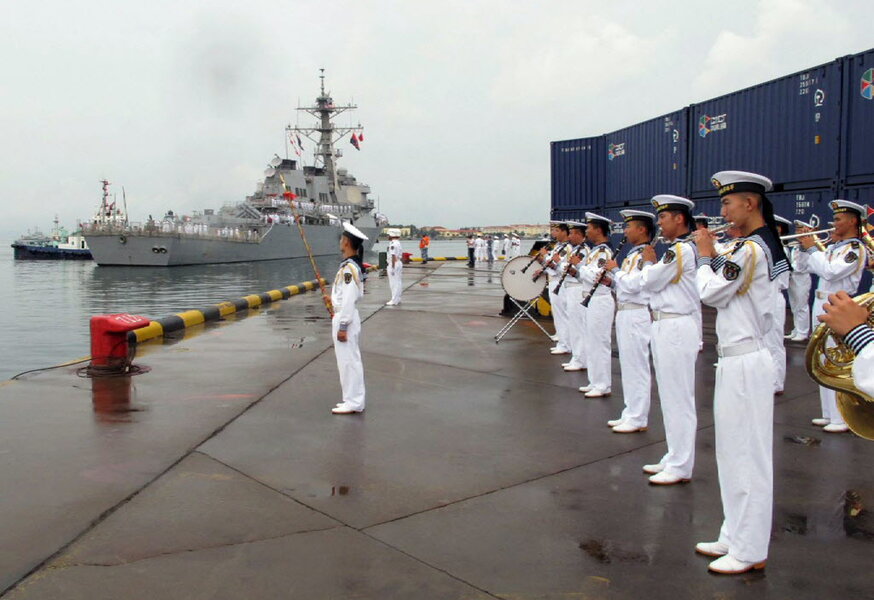US destroyer visit latest twist in China-US military ties
Loading...
| QINGDAO, China
The visit of the U.S. Navy guided missile destroyer USS Benfold to the northern Chinese port of Qingdao this week is the latest development in a long-term effort to build trust between the countries' militaries amid tensions and a rivalry for dominance in Asia.
Though China resents the highly visible presence of the U.S. armed forces in Asia, especially the South China Sea, it has gradually overcome its reluctance and shown a willingness to engage that the sides hope will help avoid conflicts. Below is a look at the Benfold's visit and some of the steps the sides have taken to build their relationship:
___
WHAT'S THE SIGNIFICANCE OF THE VISIT?
The Benfold's visit is the first to China by an American warship since Beijing responded furiously to a Hague-based international arbitration tribunal's ruling that its expansive South China Sea maritime claims had no basis in law. The fact the visit went ahead appears to show that Beijing now values the military-to-military relationship too much to allow it to be derailed by other events as was once the case. Qingdao is the base of China's northern fleet and is thus less sensitive than ports to the south closer to hotspots, such as Taiwan and the South China Sea.
___
HOW HAVE THE SIDES RESPONDED TO THE ARBITRATION RULING?
China was incensed by the ruling and declared it null and void. It renewed its commitment to defend its sovereignty claims and continue work on man-made islands in the Spratly island group that have been heavily criticized by the U.S. and others as adding to regional tensions. Beijing has also launched what it says will be regular aerial patrols over the South China Sea and says it will consider whether to declare an air defense identification zone over all or part of the water body. The U.S. has called on China to respect the ruling, but has not staged another freedom of navigation mission in which its ships sail near China's artificial islands, which draw warnings and rebukes from Beijing.
___
WHAT HAVE THE SIDES DONE TO BUILD TRUST?
Apart from exchanging visits, China and the U.S. have sought to reach agreements on the rules of the road and work with each other on non-combat oriented training missions. At a multilateral forum in Qingdao in 2014, the two navies agreed to a Code for Unplanned Encounters at Sea that seems to have allowed them to avoid confrontations. Last year, they added a similar agreement on aerial encounters between their military pilots that calls for, among other things, maintaining a secure distance, communicating clearly and avoiding rude body language. This year, China also took part in the world's largest maritime drills, known as RimPac, hosted by the U.S. every two years near Hawaii.
___
WHAT'S THE OUTLOOK FOR THE FUTURE?
China says it wants to turn a page on the arbitration ruling through bilateral talks with other claimants, although the U.S., Philippines and others resist that. The man-made islands will continue to be a source of tension, while the U.S. presence in the region will continue to grow. At the same time, China is narrowing the still-considerable gap with the U.S. Navy, adding to its fleet of high-tech destroyers similar to the Benfold and building homemade aircraft carriers to join the single, heavily refurbished Ukrainian one it has now. That will make it even more crucial that the sides build trust and relationships to help overcome future problems.





